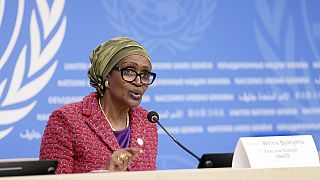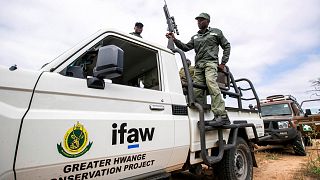Zimbabwe
An El Nino induced drought has left about 4 million people in need of food aid in Zimbabwe.
With this figure in hand, the World Food Programme (WFP) has established an innovative way of using satellite data to help the affected nation respond better to poor harvests and hunger in future.
“Sentinel2 is a brand new satellite that provides very high resolution data with a very high frequency of observation. And what this does is to allow us to better estimate the impacts of El Niño on crop production planted areas and likely agricultural outcomes,” explained Rogerio Bonifacio, a climate analyst at WFP.
Sentinel2 is now being used to provide data for a food security programme launched last year. The programme has benefited a number of people.
“Food secure programme has helped us; it will assist in reducing hunger. If you compare the crop I had on the farm and the one I have now, there is big difference. Now that I’m practicing conservation agriculture it shows that I will harvest far much more than I did before. Even a smallholder can conserve water and soil and harvest more than one who has not. So for me this is a good programme,” said a farmer from southern Zimbabwe.
The southern African country is experiencing its worst drought in 24 years and rainfall is not expected in the country in the near future. This revelations led President Robert Mugabe to declare a state of disaster.
Recently, the country had to put its wild animals up for sale due to the devastating drought.
Parks and Wildlife Management Authority said in a statement that they intend on destocking their park estates through selling some of the wildlife.
Reuters












Go to video
Zimbabwe court rejects opposition bid to block Gukurahundi massacre hearings
02:19
South African actor Embeth Davidtz makes directorial debut with Rhodesia-set drama
Go to video
World's first robot boxing contest packs punch to optimize future algorithms
Go to video
To avoid conflicts with locals, Zimbabwe tracks elephants with GPS
Go to video
Experts call for AI skills development in Africa's education sector
Go to video
Putin hosts talks with African leaders on security